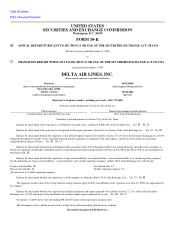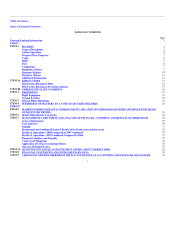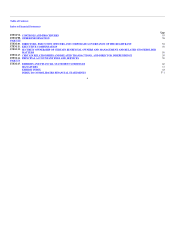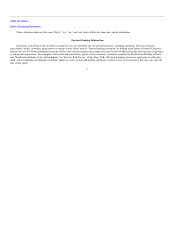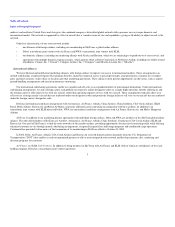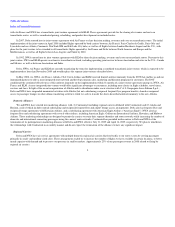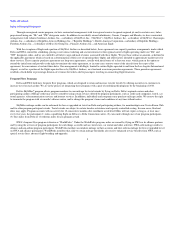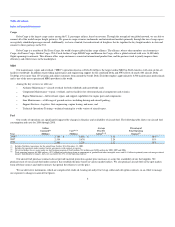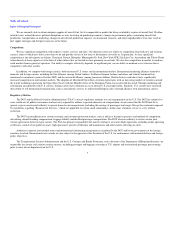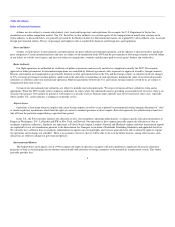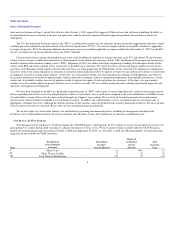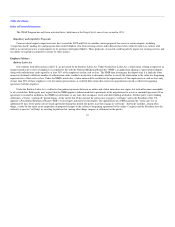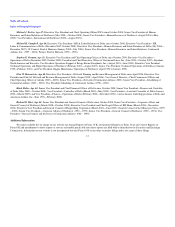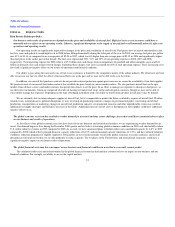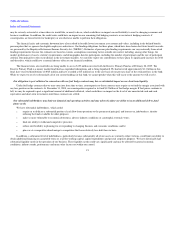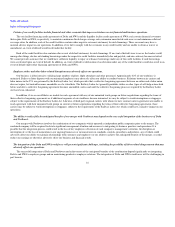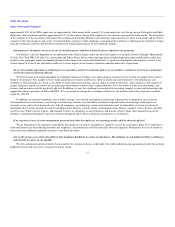Delta Airlines 2008 Annual Report Download - page 12
Download and view the complete annual report
Please find page 12 of the 2008 Delta Airlines annual report below. You can navigate through the pages in the report by either clicking on the pages listed below, or by using the keyword search tool below to find specific information within the annual report.
Table of Contents
Index to Financial Statements
We are currently able to obtain adequate supplies of aircraft fuel, but it is impossible to predict the future availability or price of aircraft fuel. Weather-
related events, natural disasters, political disruptions or wars involving oil-producing countries, changes in government policy concerning aircraft fuel
production, transportation or marketing, changes in aircraft fuel production capacity, environmental concerns, and other unpredictable events may result in
fuel supply shortages and fuel price increases in the future.
Competition
We face significant competition with respect to routes, services and fares. Our domestic routes are subject to competition from both new and existing
carriers, some of which have lower costs than we do and provide service at low fares to destinations served by us. In particular, we face significant
competition at our hub airports in Atlanta, Cincinnati, Detroit, Memphis, Minneapolis/St. Paul, New York-JFK, Salt Lake City, Amsterdam and Tokyo-Narita
either directly at those airports or at the hubs of other airlines that are located in close proximity to our hubs. We also face competition in smaller to medium-
sized markets from regional jet operators. Our ability to compete effectively depends, in significant part, on our ability to maintain a cost structure that is
competitive with other carriers.
In addition, we compete with foreign carriers, both on interior U.S. routes and in international markets. International marketing alliances formed by
domestic and foreign carriers, including the Star Alliance (among United Airlines, Lufthansa German Airlines and others and which Continental has
announced its intention to join in October 2009) and the oneworld Alliance (among American Airlines, British Airways and others) have significantly
increased competition in international markets. The adoption of liberalized Open Skies Aviation Agreements with an increasing number of countries around
the world, including in particular the Open Skies Treaty with the Member States of the European Union, has accelerated this trend. Through marketing and
codesharing arrangements with U.S. carriers, foreign carriers have obtained access to interior U.S. passenger traffic. Similarly, U.S. carriers have increased
their ability to sell international transportation, such as transatlantic services to and beyond European cities, through alliances with international carriers.
Regulatory Matters
The DOT and the Federal Aviation Administration ("FAA") exercise regulatory authority over air transportation in the U.S. The DOT has authority to
issue certificates of public convenience and necessity required for airlines to provide domestic air transportation. An air carrier that the DOT finds fit to
operate is given unrestricted authority to operate domestic air transportation (including the carriage of passengers and cargo). Except for constraints imposed
by regulations regarding "Essential Air Services," which are applicable to certain small communities, airlines may terminate service to a city without
restriction.
The DOT has jurisdiction over certain economic and consumer protection matters, such as unfair or deceptive practices and methods of competition,
advertising, denied boarding compensation, baggage liability and disabled passenger transportation. The DOT also has authority to review certain joint
venture agreements between major carriers. The FAA has primary responsibility for matters relating to air carrier flight operations, including airline operating
certificates, control of navigable air space, flight personnel, aircraft certification and maintenance and other matters affecting air safety.
Authority to operate international routes and international codesharing arrangements is regulated by the DOT and by the governments of the foreign
countries involved. International route awards are also subject to the approval of the President of the U.S. for conformance with national defense and foreign
policy objectives.
The Transportation Security Administration and the U.S. Customs and Border Protection, each a division of the Department of Homeland Security, are
responsible for certain civil aviation security matters, including passenger and baggage screening at U.S. airports and international passenger prescreening
prior to entry into or departure from the U.S.
7


